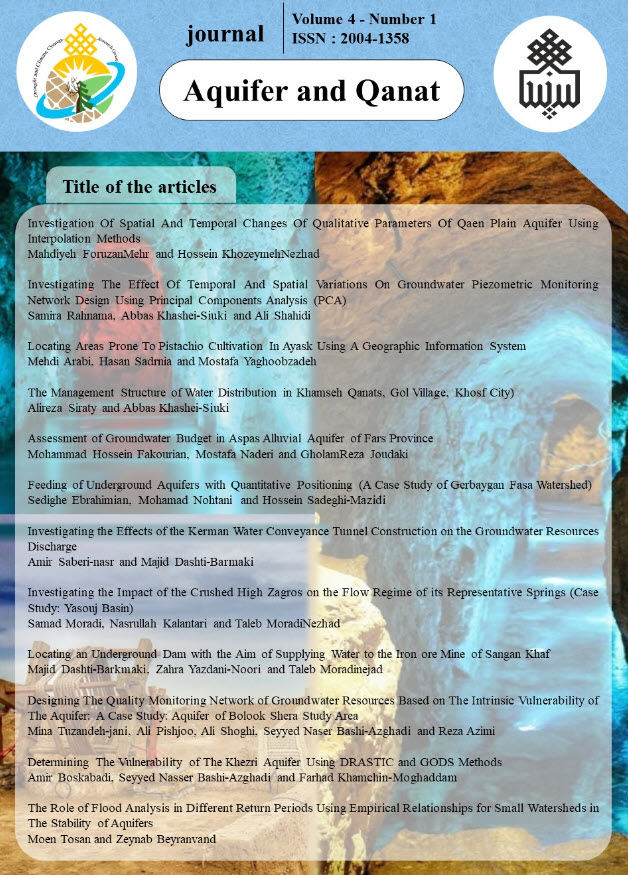Document Type : Original Article
Authors
1 Ph.D. Candidate of Water Engineering Department of Gorgan university of Agricultural Sciences and Natural Resources
2 Associate Professor, Department of Water Engineering, Faculty of Water and Soil, Gorgan University of Agricultural Sciences and Natural Resources, Gorgan, Iran
Abstract
Agricultural activities have grown more due to population growth and increasing demand for more products in the Urmia plain in recent years and have mainly been expanded with groundwater withdrawal, and because of the limited availability of surface water resources, this issue has led to a sharp drop in groundwater resources in the area. In this research, the groundwater footprint indicator was used to study the agricultural products’ effect on groundwater stresses. For this purpose, eight crops were selected, and the indices of water footprints, groundwater footprints, groundwater stresses, water use intensity, and efficiency were calculated. The results showed that the groundwater footprint indicator and the stress on groundwater resources for all studied products in Urmia plain were respectively 464.5 km2 and 5.97 units. Among the studied crops, wheat and alfalfa put the most stress on the groundwater of the region with 1.78 and 2.8 units, respectively. By increasing the irrigation efficiency to 25%, the stress index applied to groundwater for wheat yield became less than 1 unit. The study results on the water use intensity and products’ efficiency also showed that water consumption decreases with increasing efficiency, and products’ efficiency increases. However, increasing irrigation efficiency alone will not eliminate the entire stresses on the agricultural sector, the environment, and in particular, groundwater resources, and it is only an additional factor along with other factors.
Keywords

